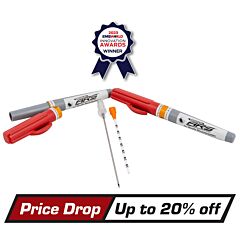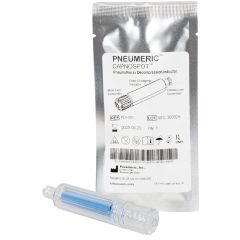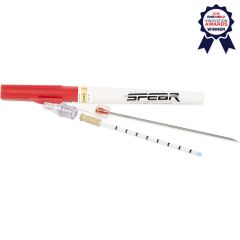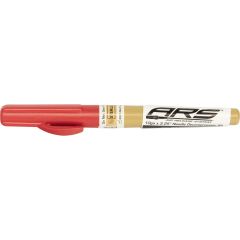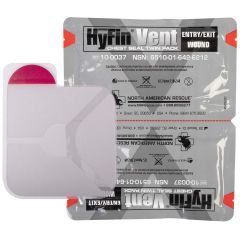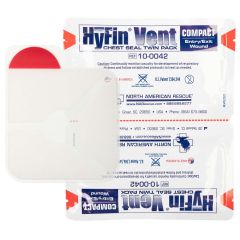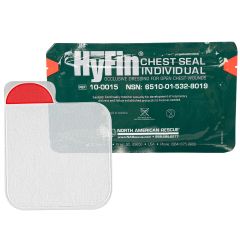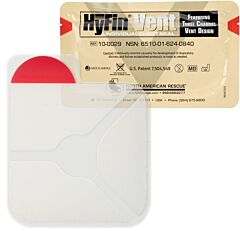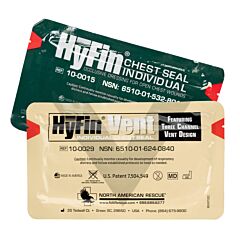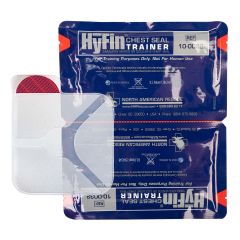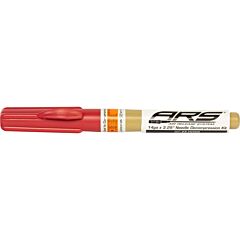The NEW Enhanced ARS™
It’s time to rethink needle decompression techniques and device characteristics to optimize success
The Right Procedure At The Right Time With The Right Equipment.
Recent studies have shown that it’s time to RETHINK the techniques and device characteristics utilized when performing needle decompression. By incorporating proven procedural adjustment, and with the addition of new evidence-based features on the needle and catheter, medical providers can ACHIEVE a higher rate of successful needle decompression and mitigate additional trauma while performing this life-saving procedure.
"The fenestrated catheters were almost two times more successful than the non-fenestrated catheters."
Enhanced Features
Acting on evidence-based medicine, North American Rescue is introducing the Enhanced ARS™ (Air Release System) as an additional offering in their needle decompression product line. The Enhanced ARS™ brings several features specifically implemented to address needs identified in the data.
The Enhanced ARS™ features an improved needle tip design with “scalpel” sharp, bi-bevel, tapered needle tip, which improves penetration control through tissue of varied type and thickness.
The NEW fenestrated catheter delivers statistically significant improvement for tension relief and the prevention of distal catheter occlusion when compared to traditional non-fenestrated catheters. The three fenestrations, combined with the catheter tip, deliver four paths for air to escape. This exponentially decreases the potential for blockage that would interfere with airflow and recurrence of tension pneumothorax. During investigative research, fenestrated catheters were additionally shown to offer faster pressure relief and succeed when non-fenestrated catheters failed.
ENHANCED ARS™ (Air Release System)
10 GA or 14 GA
A thoracic decompression needle & catheter assembly. A newly designed system created to address documented field challenges and improve patient safety. This system was developed with inspiration from combat medics, civilian paramedics, field nurses, trauma surgeons, pulmonologists, and emergency medicine physicians. Most importantly, it is founded in science and corrects KNOWN deficiencies with Tension Pneumothorax management.
- 10ga or 14ga 3.25-inch catheter
- Improved needle tip design - “scalpel” sharp, bi-bevel, tapered needle tip, which improves penetration control through tissue of varied type and thickness (adopted from research and development of the SPEAR™). Exclusive to ENHANCED ARS™ and SPEAR™ decompression systems.
- Fenestrated catheter – showing statistically significant improvement in tension relief and the prevention of distal catheter occlusion when compared to traditional non-fenestrated catheters (A Kruse, J Achay, “Cross-Over Study Evaluating Fenestrated Needle Decompression Catheters in a Cadaver Tension Pneumothorax Model”). Fenestrated catheters were additionally shown to offer an increase in air outflow and succeed when non-fenestrated catheters failed.
- Flexible catheter (to decrease incidence of catheter kinking, in concert with modified insertion recommendations from leading experts in pulmonology, critical care, emergency medicine, and trauma surgery).
- Centimeter graduated catheter (with contrasting colors that are NVG compatible) for safer placement utilizing “thoracic depth control” (a feature based on decompression needle penetration and procedural studies; presentations by J Gurney, C Howard, J Ausman; as well as presentations, articles, and videos by S Bolleter; and as demonstrated by North American Rescue NDC training materials, including procedural videos, slides, and skills labs). Critical Point: Average depth from exterior of targeted RIB to parietal pleura is 0.5 - 1 cm. Centimeter markings allow for PRECISE placement (just beyond the parietal pleura) AND help clinician PREVENT OVER INSERTION! Evidence and anecdotal experiences continue to strongly suggest the need for insertion CONTROL with NDC. This is a procedural enhancement FIRST from 2018.
- Hardshell “pen like” protective sterile packaging (with proven record as a rugged, easy to open, “chest tube-like” package). Enhanced ARS™ and SPEAR™ packaging remains an NAR (patented) exclusive development that is mimicked but not duplicated.
- 5-year expiration.
- Up to 20% PRICE DROP on Enhanced ARS Needles (effective Oct. 1, 2025).
Safe Insertion Technique
Procedurally, needle decompression was historically taught suggesting one should “bury to the hub”, fully inserting the needle and catheter all of the way until the hub of the catheter was against the skin, then removing the needle. Experts and evidence strongly suggests that it’s time to stop burying the hub and change the way we perform needle decompression.
Eliminate explosive entry! Holding the assembly correctly, and using the centimeter depth gauge markings, it is now possible to accurately control the insertion depth of the assembly as it enters into the pleural space. Once the needle penetrates the pleural cavity (above the rib), the assembly can be angled toward the head while the catheter is threaded safely into the pleural cavity. The needle is then removed (which is the point air most often releases). This procedural change minimizes iatrogenic trauma and reduces the chances for occlusion of the catheter tip.
Why 10GA Fenestrated Catheters?
10ga Fenestrated Catheters showed statistically significant improvement in tension relief and the prevention of distal catheter occlusion when compared to ALL NDC catheters. 10ga fenestrated catheters were additionally shown to offer marked increase in air outflow and a corresponding decrease in time to relief of tension.
Featured Decompression Items
© 2026 North American Rescue, LLC. All rights reserved. All training services are offered by NAR Training, LLC. Site last updated 01/20/2026.
Terms & Conditions | EULA/Terms of Use | Supplier Terms


